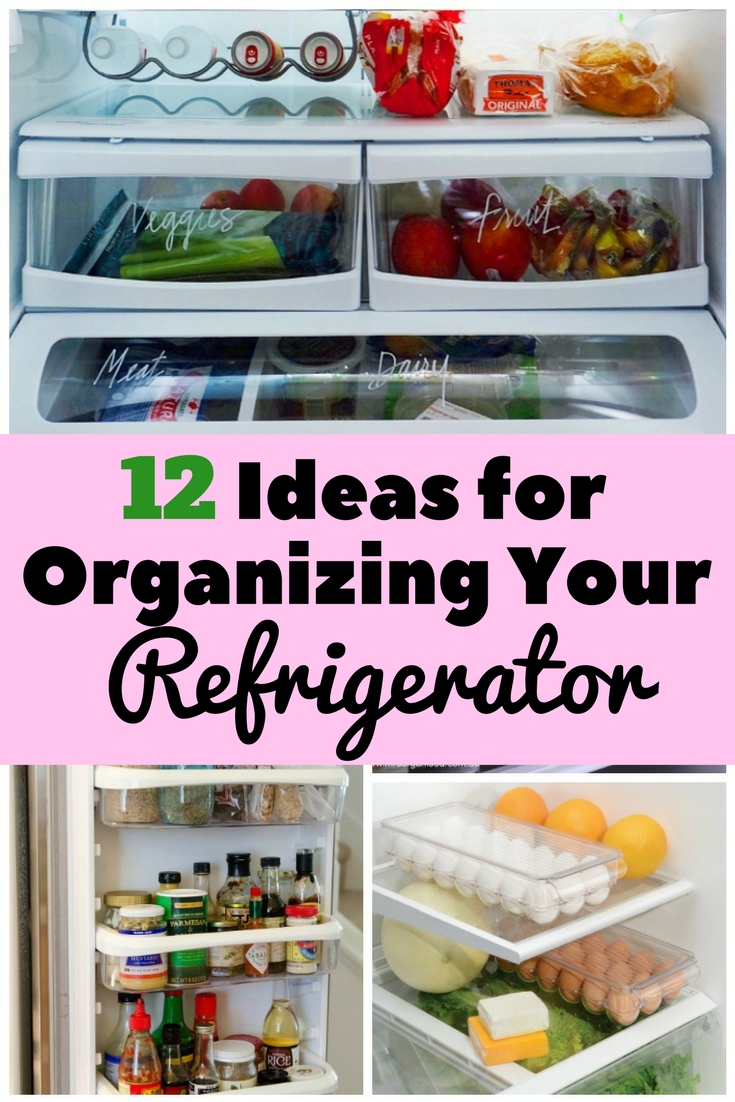
Outdated food, mysterious leftovers, sticky spills: The refrigerator can be a scary place. In fact, cleaning out the fridge is one of my least favorite chores. That's why it makes more sense to keep my fridge neat and organized to begin with. A weekly clean-up is more efficient when I have a system in place and every item has a home. Plus, my food stays fresher longer because I'm storing it properly. Do you, too, have a refrigerator in need of order? Read on to learn tips and tricks for organizing your refrigerator.
-
Line Your Shelves

Image source: suburble.com Refrigerator shelves benefit from regular wipe-downs. If you line them first, it can make the clean-up process quicker. HouseLogic recommends using plastic placemats since they're easy to slide out and wipe down with soap and warm water. Andrea Dekker offers a disposable alternative: Use sticky food-storage paper and toss it when it gets messy.
-
Hang Things When Possible

Image source: foodbeast.com The space above your shelves has a tendency to be empty, wasted space. Prevent that by hanging up food there. According to Food Beast, you can mount specially designed magnets from which to hang metal-lidded drink bottles. Good Housekeeping suggests using binder clips to hang bagged food items from wire shelves.
-
Organize with Baskets

Image source: goodbyehousehellohome.com Sorting food into like categories and assigning each group its own basket helps keep your food organized says Goodbye, House! Hello, Home! They recommend using baskets with built-in handles so that you can easily slide them out to access the contents. They also offer the smart idea to put narrow baskets in your deli drawer to keep that area organized too.
-
Place Leftovers in Front

Image source: mrsorganised.com.au Living on 50 has a helpful tip for making sure that you don't forget to eat your leftovers: Place them toward the front of the fridge. The visibility of that spot is a regular reminder that those items should be consumed soon. The same goes for items that are nearing their best-by date, such as a carton of yogurt that is set to expire next week. Letting those items get buried in the back increases the chances that they will end up going to waste.
-
Spin Small Items on a Lazy Susan
Image source: freshpaintabq.blogspot.com Little items have a tendency to get lost behind bigger items in the refrigerator. Placing these on a spinning lazy Susan collects them all in one spot, and you can rotate the accessory to see the items on all sides. As Kitchen Stewardship points out, a lazy Susan even allows you to raise up the shelf on which it sits since you will no longer need to reach over the items to grab the ones in back.
-
Put Eggs on the Middle Shelf

Image source: kitchenstewardship.com Eggs need a stable environment, so Lauren Conrad recommends placing them on the middle shelf, where the temperature is typically the most consistent. Farm-fresh eggs can stay out on the counter, but store-bought ones do need refrigeration.
-
Use the Door for Condiments
Image source: thekitchn.comThe door of the fridge has a tendency to be warmer than the rest of the refrigerator, so keep milk and eggs out of there. Instead, use the door for condiments, which are more stable. Real Simple says that the door is good for ketchup, salad dressing, mayonnaise, and salsa. Butter can go in the door's dairy compartment, and the door is also a handy spot for soda and bottled water.
-
Keep Meat in a Plastic Bin
Image source: thekitchn.comJuice from meat can drip down to the shelf below it and contaminate the food that is there. The Kitchn recommends putting meat in your lowest drawer, but that's not always possible. Their second-best recommendation is to keep meat items together in a dedicated plastic bin. Just make sure that it has a solid bottom, and be sure to wash it frequently.
-
Adjust the Drawer Humidity

Image source: youtube.com Many refrigerators have two produce drawers with built-in vents that can be adjusted to regulate their humidity. Not sure what goes where? Take the advice of Consumer Reports: Leafy greens, carrots, and cruciferous vegetables need high humidity. Apples, grapes, peppers, and mushrooms do best with low humidity. Avocados, melons, and stone fruits should remain on the counter until ripe, but store them in your low-humidity drawer after you move them to the refrigerator.
-
Label Everything
Image source: thehomeedit.com Once you've found a home in your refrigerator for everything, labeling their spots will help you stay on top of refrigerator organization. Better Homes & Gardens recommends placing a label on each of the shelves in the door. Baskets and drawers on the main shelves can each get a label, too.
-
Leave Yourself a Note

Image source: lovesolihull.org A list on the refrigerator door can keep track of the dates that food went into the fridge and which items need to be restocked on the next supermarket run. Apartment Therapy suggests using a magnetic notepad, but a dry-erase board stuck to the front would work, too.
-
Don't Use the Fridge for Everything

Image source: freshdirect.com Some foods just don't belong in the refrigerator. Not only does placing them there waste valuable fridge space, but it can also have a negative effect on those foods. Food Network recommends leaving potatoes, tomatoes, and honey out of the refrigerator.
Which of these ideas are you going to put into practice first? One of my first steps was giving each shelf in the door an assigned purpose. That helped the whole fridge look more organized and put together. Tell us your first step below, and be sure to leave your own refrigerator hacks too.




